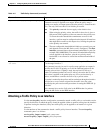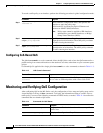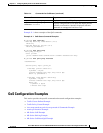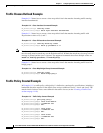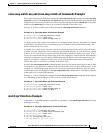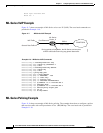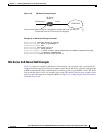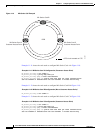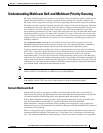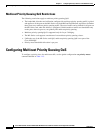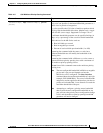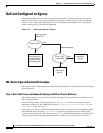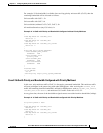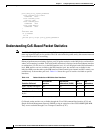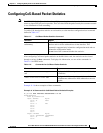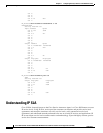
11-23
Cisco ONS 15310-CL and Cisco ONS 15310-MA Ethernet Card Software Feature and Configuration Guide R8.5
78-18133-01
Chapter 11 Configuring Quality of Service on the ML-Series Card
Understanding Multicast QoS and Multicast Priority Queuing
Understanding Multicast QoS and Multicast Priority Queuing
ML-Series card QoS supports the creation of two priority classes for multicast traffic in addition to the
default multiclass traffic class. Creating a multicast priority queuing class of traffic configures the
ML-Series card to recognize an existing CoS value in ingressing multicast traffic for priority treatment.
The multicast priority queuing CoS match is based on the “internal" CoS value of each packet. This value
is normally the same as the egress CoS value (after policer marking if enabled) but differs in two cases.
The “internal” CoS value is not the same as the egress value when dot1q-tunneling is used. With
dot1q-tunneling, the internal CoS value is always the value of the outer tag CoS, both when entering the
dot1q tunnel and leaving the dot1q tunnel. The “internal” CoS value is also not the same as the egress
value if a packet is transported over a VLAN, and the VLAN tag is removed on egress to send the packet
untagged. In this case, the internal CoS is the CoS of the removed tag (including ingress policing and
marking if enabled).
The cos priority-mcast command does not modify the CoS of the multicast packets but only the
bandwidth allocation for the multicast priority queuing class. The command guarantees a minimum
amount of bandwidth and is queued separately from the default multicast/broadcast queue.
Creating a multicast priority queuing class allows for special handling of certain types of multiclass
traffic. This is especially valuable for multicast video distribution and service provider multicast traffic.
For example, a service provider might want to guarantee the protection of their own multicast
management traffic. To do this, they could create a multicast priority queuing class on the ML-Series
card for the CoS value of the multicast management traffic and guarantee its minimum bandwidth. For
multicast video distribution, a multicast priority queuing class on the ML-Series card for the CoS value
of the multicast video traffic enables networks to efficiently manage multicast video bandwidth demands
on a network shared with VoIP and other Ethernet services.
Note Multicast priority queuing traffic uses port-based load-balancing over RPR and EtherChannel. Default
multicast traffic is load-balanced over RPR, but not over EtherChannel.
Note Multicast priority queuing bandwidth should not be oversubscribed for sustained periods with traffic
from multiple sources. This can result in reduced multicast priority queuing throughput.
Default Multicast QoS
Default multicast traffic is any multicast traffic (including flooded traffic) that is not classified as
multicast priority queuing. The default multicast class also includes broadcast data traffic, control traffic,
L2 protocol tunneling, and flooding traffic of the unknown MAC during MAC learning.
With no QoS configured (no multicast priority queuing and no output policy map) on the ML-Series
card, the default multicast bandwidth is a 10 percent minimum of the total bandwidth.
When bandwidth is allocated to multicast priority queuing but no output policy map is applied, the
default multicast congestion bandwidth is a minimum of 10 percent of the bandwidth that is not allocated
to multicast priority queuing.
When an output policy-map is applied to an interface, default multicast and default unicast share the
minimum bandwidth assigned to the default class. This default class is also known as the match-any
class. The minimum bandwidth of default multicast is 10 percent of the total default class bandwidth.



